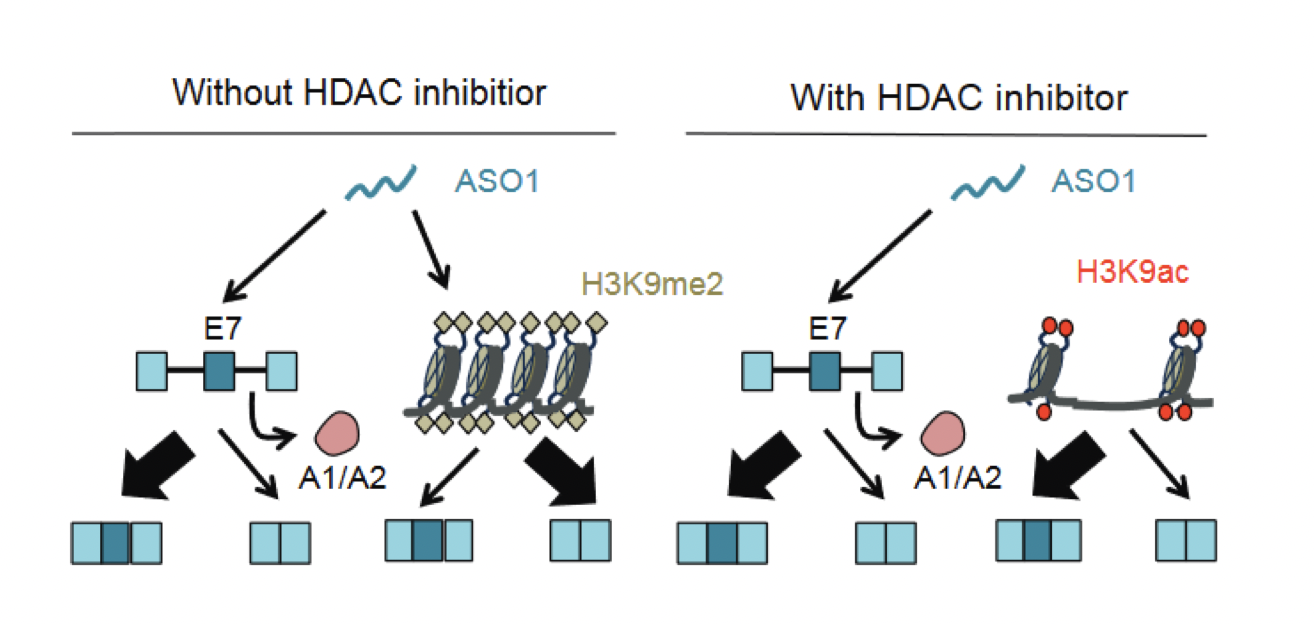Improved therapy for spinal muscular atrophy
Published in Cell, a collaboration between the groups of Alberto Kornblihtt (Universidad de Buenos Aires, Argentina), Adrian Krainer (Cold Spring Harbor Laboratory, USA) and Nick Proudfoot (Dunn School) reports an improved treatment for spinal muscular atrophy.
Spinal muscular atrophy (SMA) is a genetic disease of the central nervous system, causing muscle weakness and wasting. Affecting ~ 1:10000 people worldwide, SMA is caused by mutations in the SMN1 gene which lead to the loss of its function. Humans have an SMN1 related gene called SMN2, which is almost identical to SMN1 except for a critical mutation that causes exon 7 to be skipped during splicing. This means that SMN2 proteins are unstable and truncated, and are thus only partially functional and unable to compensate for the loss of SMN1. A previous study by the group of Adrian Krainer realised that SMN2 could be made to compensate for the loss of SMN1 by forcing it to include exon 7. This is achieved by development of an antisense oligonucleotide (ASO) therapeutic for SMA called Nusinersen (Spinraza). Nusinersen is a splicing-corrective drug that promotes the inclusion of SMN2 exon 7, making it capable of compensating for the lack of functional SMN1, and in 2016 became the first approved drug for treating SMA. Amazingly, this drug has been shown to slow disease progression and improve motor function in ~60% of children affected by SMA.
Here, Marasco et al. show that Nusinersen has a side effect of promoting the deposition of the repressive histone mark H3K9me2 on SMN2, creating a repressive chromatin environment. This repressive chromatin environment is inhibitory to RNA polymerase II transcription which in turn reduces expression of full-length SMN2, meaning that Nusinersen can be made more effective. Marasco et al. show that opening up the chromatin with a histone deacetylase (HDAC) inhibitor prevents the negative effects on chromatin and transcription caused by Nusinersen. Importantly, co-treatment of a Nusinersen-like ASO with the HDAC inhibitor improved the inclusion of SMN2 exon 7 in comparison to treatment with the ASO alone, leading to better SMN expression and greatly improved growth, survival and neuromuscular functions in a mouse model of SMA.
This exciting study has the potential to increase the clinical efficacy of Nusinersen and improve the lives of people with SMA.
Written by Isabella Maudlin (Murphy lab) @BellaMaudlin
Research article: Marasco et al. (2022) Counteracting chromatin effects of a splicing-correcting antisense oligonucleotide improves its therapeutic efficacy in spinal muscular atrophy. Cell, 185(12):2057-2070
